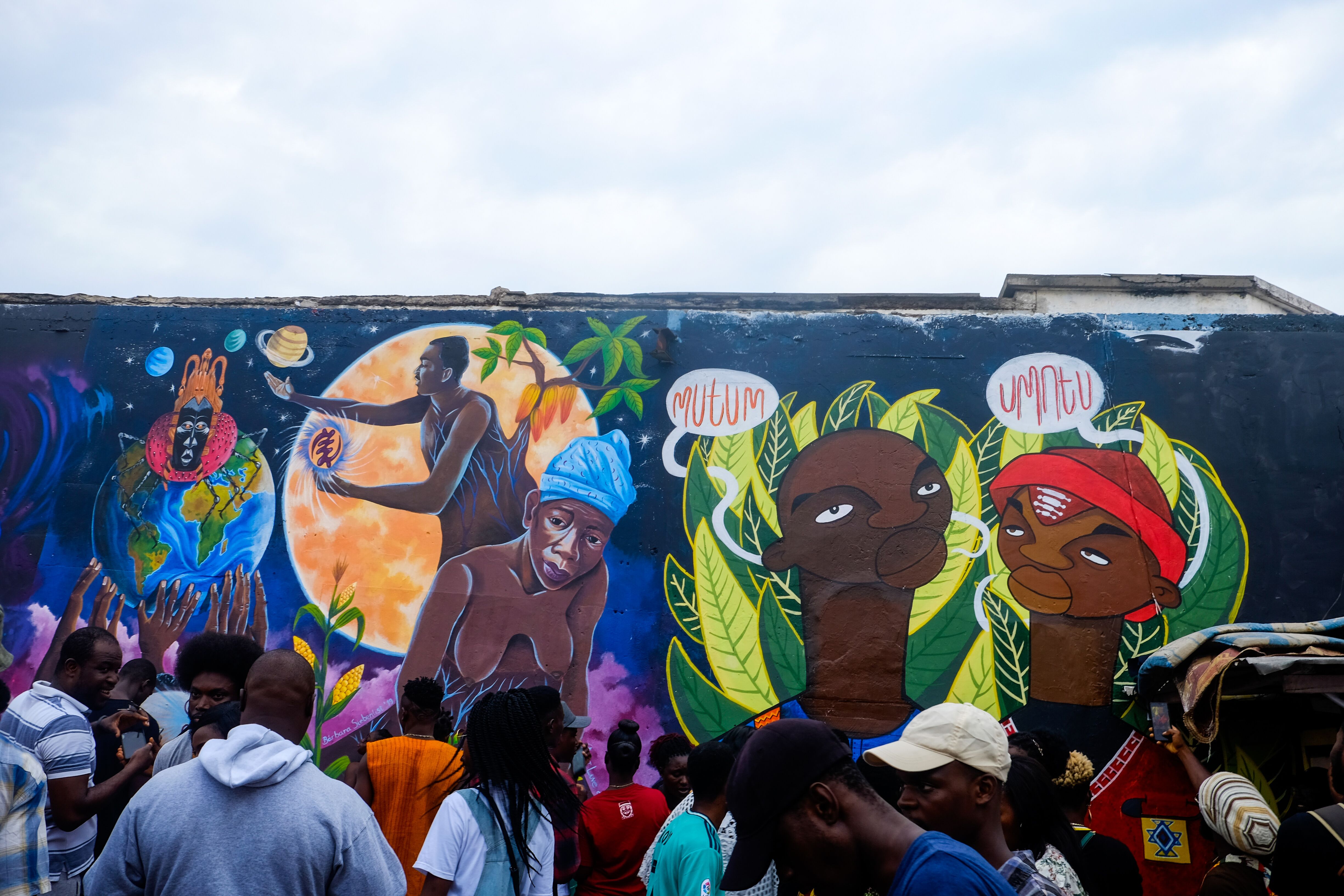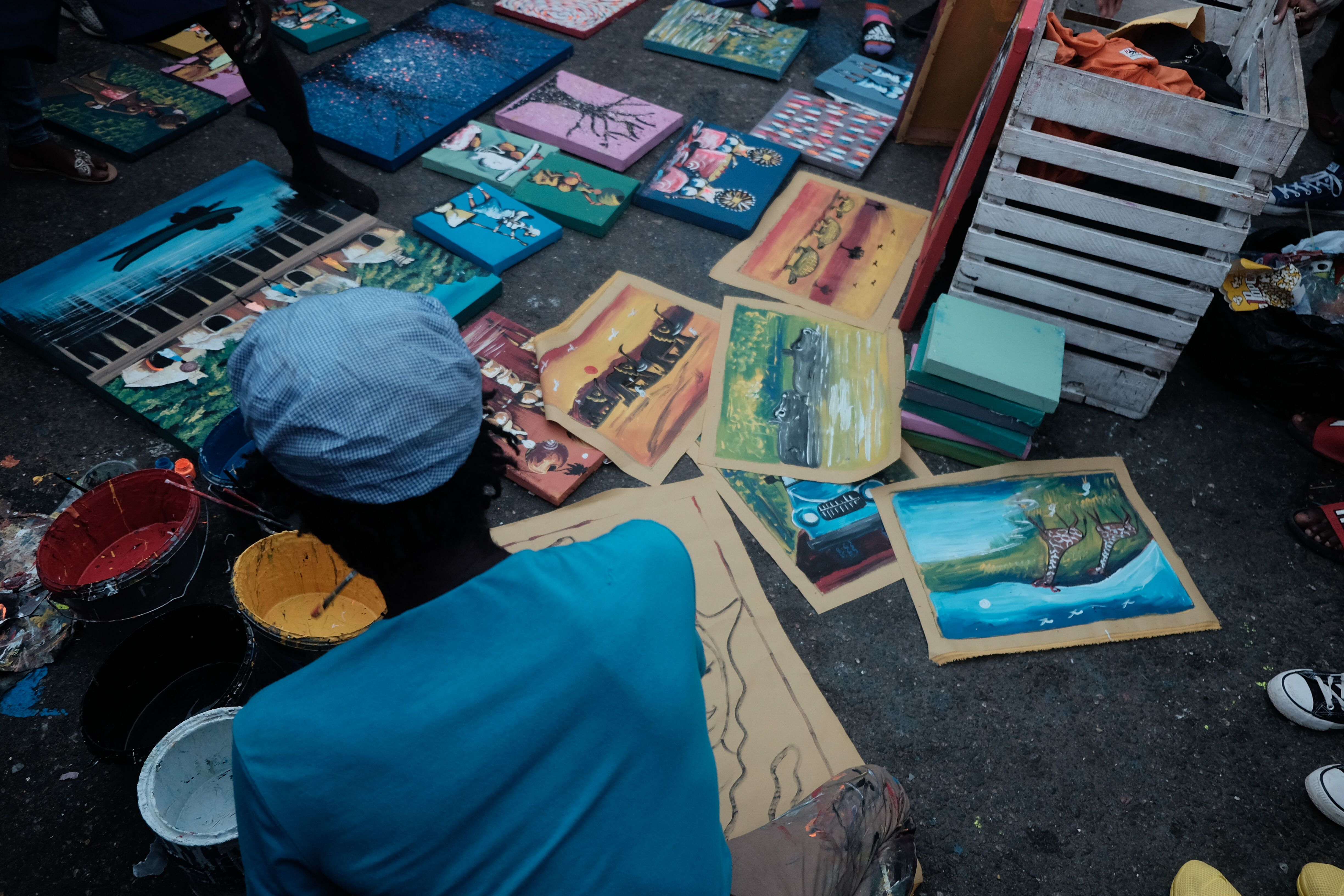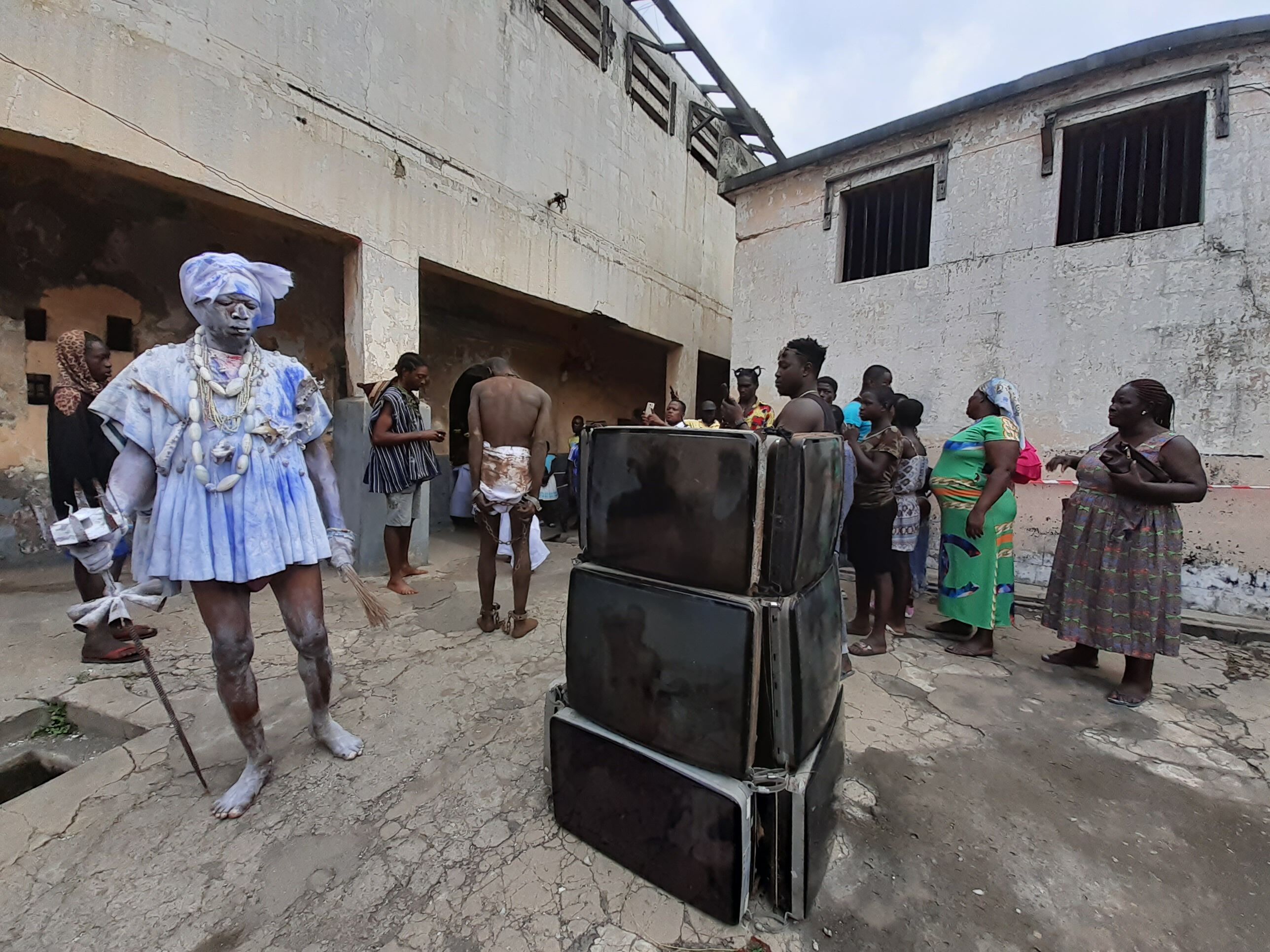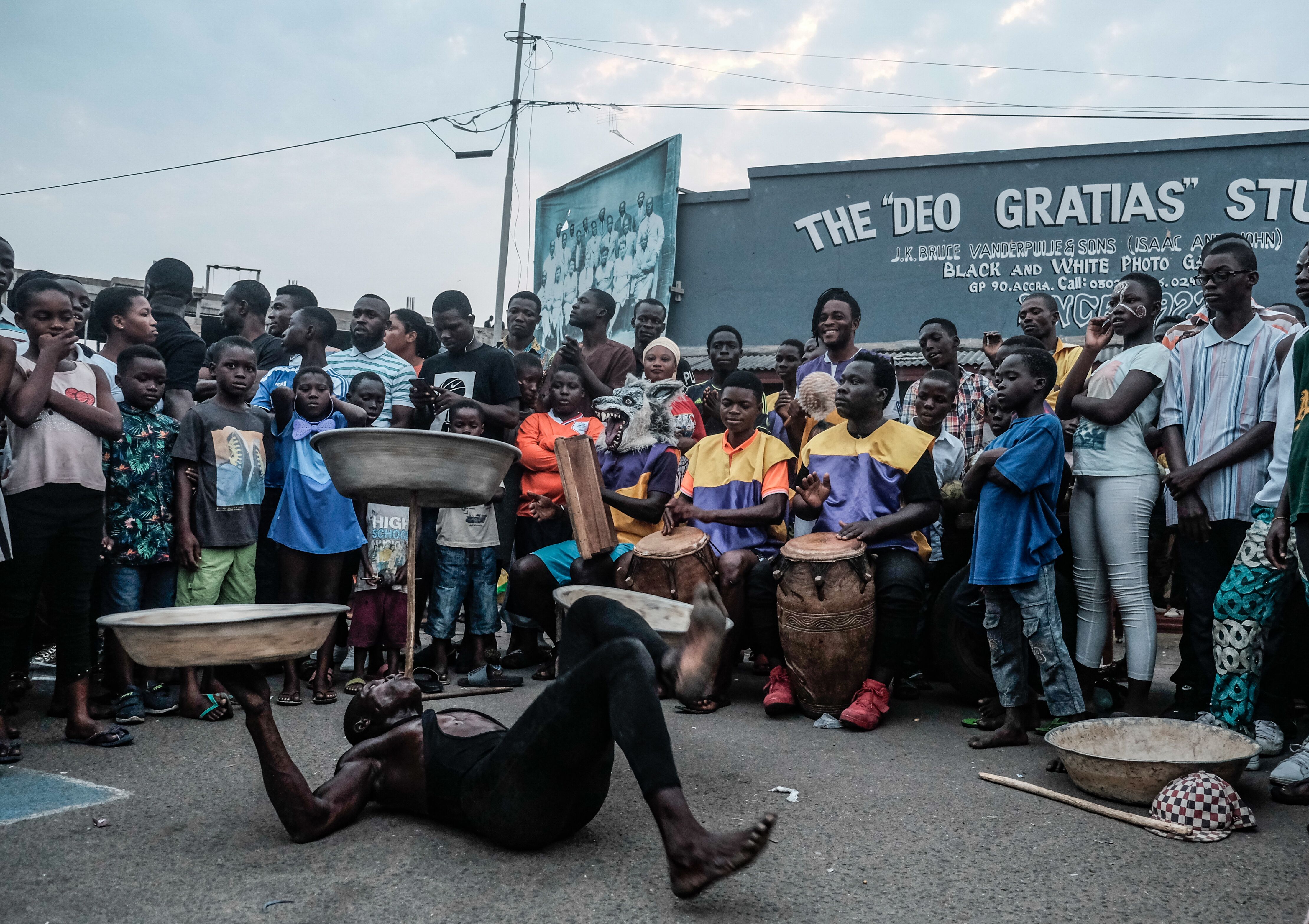On the walls of the Old Kingsway building in Jamestown – an historic fishing community in Accra – Amina Gimba’s complex mural is almost complete. As she signs her name underneath it, just a few yards away, American rapper Mitchy Slick is stepping off stage. Mo’believe, a Nigerian urban-folk singer with growing popularity across West Africa, takes Slick’s place onstage. He whips up the already excited crowd in both his native Yoruba and the local Ga language.
It has just gone 8PM in late August, and excitement is clearly building to celebrate the final night of Chale Wote 2019 – Africa’s largest street art festival. Now in its ninth edition, this annual, two-week gathering of artists and musicians attracts 30,000 visitors to Jamestown every August, turning one of Accra’s oldest districts into a live art installation. Children run through the streets as adults in vibrant colours vie with one another to stand out. As an event originally created to promote local artists, Chale Wote now hosts more than 160 musicians, illustrators, artists and dancers from across the continent, in what organisers describe as a “celebration of kinship… and shared humanity”.
Videos by VICE

This year’s festival coincides with the 200th anniversary of the abolishment of the slave trade in West Africa, and Ghana’s year of the return – an initiative by the Ghanaian government that aims to encourage the African diaspora to resettle back on the continent and connect with their roots. To do this, the government has waived visa requirements for citizens of Jamaica, and amended a 2002 law to make it easier for people of African origin to apply for a right to stay indefinitely in Ghana. In 2018, tourism contributed 5.5 percent of the West African country’s GDP, with that number expected to rise considerably this year.
This is the second year artist Gimba has exhibited at the festival. But she tells me that Chale Wote offers more than just a platform to showcase her work. It’s an opportunity to collaborate with other African artists who have become like family. It’s that shared, collaborative experience, she says, that makes the festival feel like home. Last year, she had a mural at Brazil house – the first building built by Afro-Brazilian returnees to Ghana after the slave trade. That mural was eventually painted over. “You leave something behind when you come for Chale Wote,” she tells me. “For some people, it is stress. For me, it is the gift of my work.”
Mo’believe will be back in Ghana at the end of the year to perform at Afronation – locally dubbed “West African Coachella”. His set at Chale Wote was his first time outside Nigeria, and he has already fallen in love with Ghana. “Chale Wote is a lot more than my first international performance. It has been a spiritual experience for me.”

Aside from the art and music, visitors can take part in a large variety of saloon events spread out over 12 days – from a film lab at the Museum of Science and technology to a colour grading workshop for new and established filmmakers and photographers, to even dance classes. The festival also hosts profound conversations about blackness, religion and shared experiences as Africans. But the main attractions are the intimate parties in dimly lit rooms with obscure DJs playing sets heavily padded with South African house music.
This is Ibrahim Voodoo’s first time at the festival. In late July, he moved to Accra from Lagos with his wife, in what was initially meant as a three-month temporary move. But he’s been so impressed by the spirit and intention of Chale Wote that he’s decided to stay remain in Accra for good. Ibrahim was particularly impressed by the Homowo procession – a large parade that pays tribute to the harvest festival celebrated by the Ga people of Jamestown, celebrating an ancient bumper harvest that came after a long period of famine in the city. “Everybody joined in with the procession, thankful for a past victory,” he tells me.

“Chale Wote is a disruptive and chaotic experience that has reached expert status at what they do, and that is great for African culture,” says Okorie, a curatorial fellow at The ANO Institute of Arts and Knowledge. “It is in the permanence; the paintings, murals and works of art become a part of everyday life in Jamestown for at least a year. It is a reminder that magic happened here, for visitors and for the people that live permanently in the space.”
Scroll down to see more photos from Chale Wote 2019.













@theOluwatosin | @FantasticHITCH
